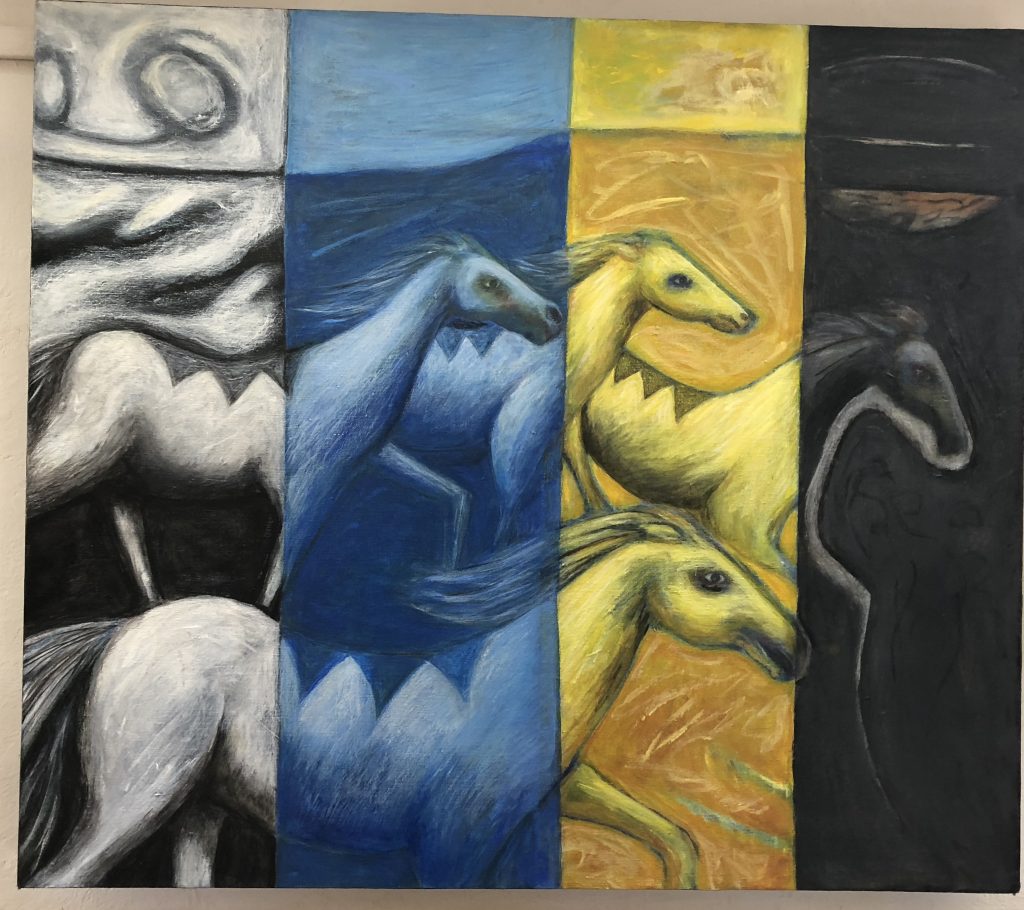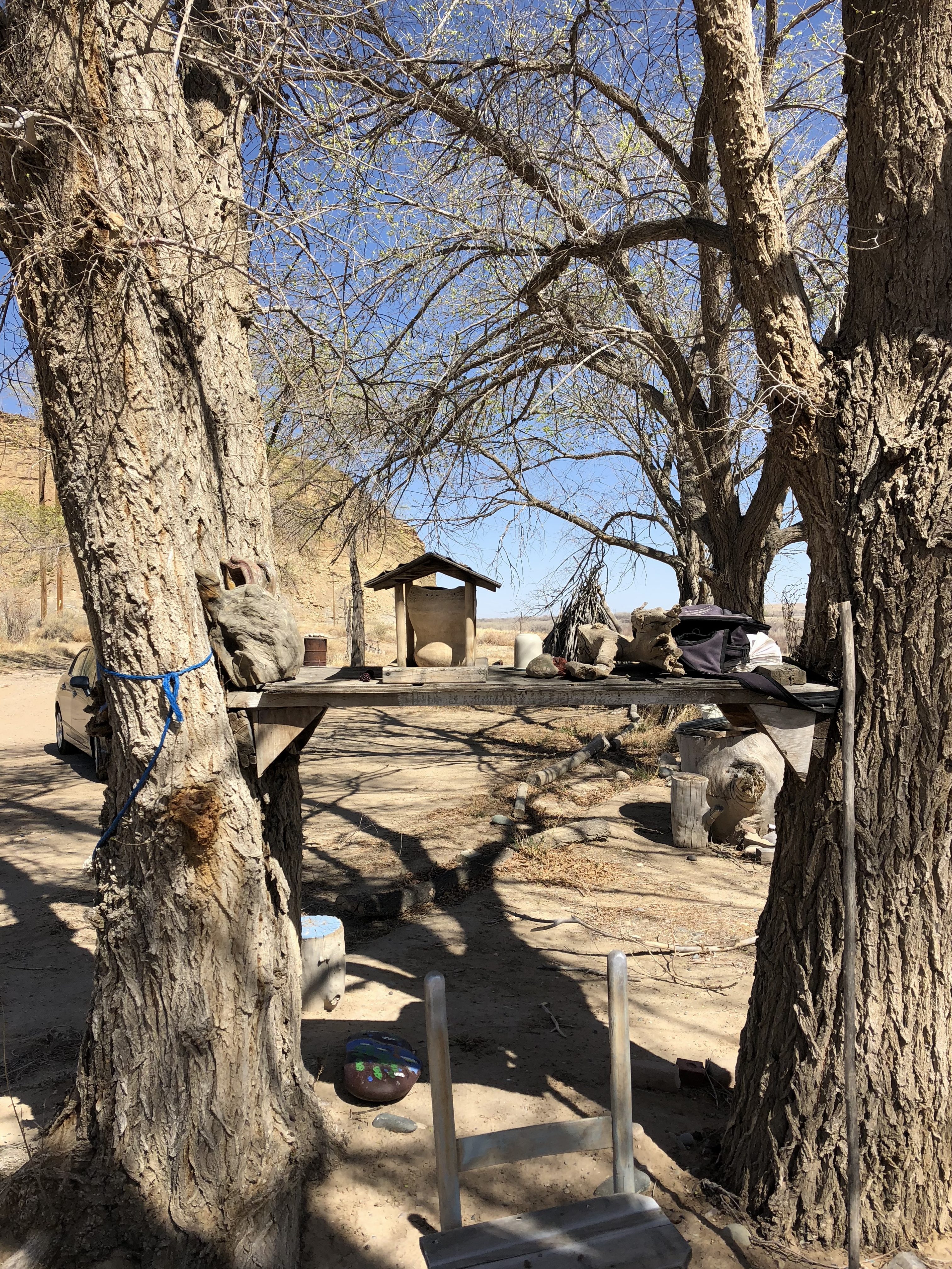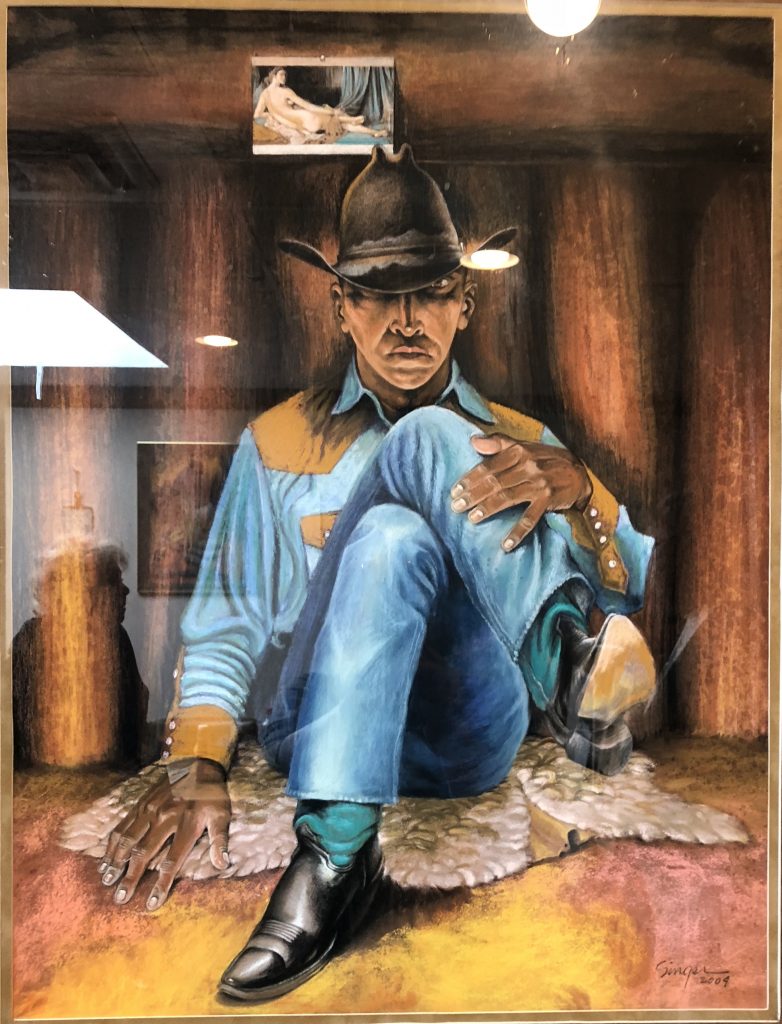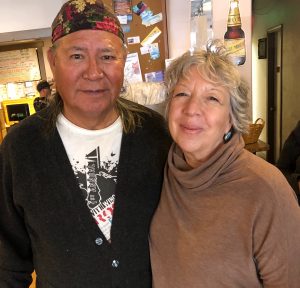
When we saw “Salisbury Steak” listed on the cafeteria “Specials” board at the Thunderbird Lodge near Canyon de Chelly, my sister logged into Trip Advisor for restaurant recommendations.
This wasn’t my first time in Chinle, so I was rather amused at the oxymoronic concept that Chinle appeared in the headline of anyone’s “Best Restaurants” list. The last time I was in this small town in Navajoland, the restaurant of choice for the locals was the A&W.
Based on Trip Advisor ranking, my sister, niece and I went to The Junction, and we ate what we ordered until our hunger subsided. We’d had a full breakfast in Cortez, been on the road since morning, and it was now after 7 PM. There isn’t much to say about the restaurant Trip Advisor designated as No. 1 in Chinle except for one remarkable thing. Earlier in the day, a friend had read us a poem about the disappearance of black hairnets, but it was clear at The Junction that black hairnets hadn’t disappeared at all from Navajoland. Rather, they had swarmed onto the heads of the restaurant’s busy servers like delegates at a national hairnet convention.
In the morning, Dave Wilson, our Navajo guide into Canyon de Chelly, pointed out the new Denny’s sign on the way to the park. Denny’s beamed out its shiny red and yellow welcome high above the essential emptiness that is Chinle.
“It opened last year,” Dave Wilson said. Though his tone betrayed no excitement, the fact that he mentioned it at all gave us a clue that perhaps we should go there before leaving town.

“You know, the good Mexican place closed down,” Dave said, and I wondered if the Mexican place he was talking about was where I had a Navajo taco back in 1980.
Dave Wilson and his family have a long history in Chinle and in the Canyon. They were the cultural consultants on the video shown at the Canyon de Chelly Visitor Center. Dave still nurtures fruit trees on the canyon floor—“peaches, pears, apples . . .couldn’t do grapefruit or oranges, though. Not enough year round heat.” He pointed out his house on a small rise in town.
Dave’s father lived to the ripe old age of 102. Dave sighed after he told us this, betraying that reaching a milestone like that didn’t happen much anymore. “We didn’t know about drugs back then. Drugs and alcohol . . . that’s what the kids know.” In the canyon, Dave explained that the tribe had to take down the wooden ladders that tourists used to climb to the ruins in the rocks. “We got to protect,” he said. “There’s vandalism. We got to protect the homes of the ancients.”
My niece asked Dave about Kit Carson and the atrocities he led against the Navajo in the canyon in the 1860s. “He was a friend to a lot of tribes,” Dave said. “Cheyenne, Arapaho. He was a scout. Then the US government paid him a lot of money to round us up. He starved us. He blocked us off in the winter with boulders.”
I tried to wrap my head around the fact that Canyon de Chelly, one of the most spectacular and spiritual places on earth, had been the Navajos’ Warsaw Ghetto.
“He retired comfortably up in Taos, you know,” Dave continued about old Kit. “He settled down, had fun, watched his videos.”

The Navajo signed a treaty and made it back to their borders marked by the four sacred mountains in 1868.
And now there’s a Denny’s as bright as day in Chinle. We had lunch there. Its hostess was cheerful and cheering. “I need to tell you it may take 30 minutes for your food to come out, because we’re so busy,” she said. We assured her that was fine.
The patrons were mostly Navajo. A health care worker sat at the table across from us. She wore a crisp, colorful uniform designed to brighten a patient’s mood. She was wearing a red ribbon HIV awareness pin. The health center in Chinle is a big employer. “160 beds,” Dave told us.
Our Denny’s server was energetic and eager to please. I had a club sandwich, and, compared to my hamburger at The Junction, my Denny’s sandwich was a piece of heaven. Make note: Denny’s now sits at No. 4 on the Trip Advisor’s “Chinle’s Best” list.








